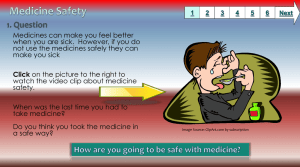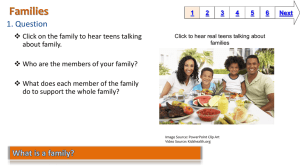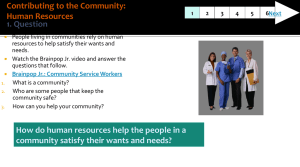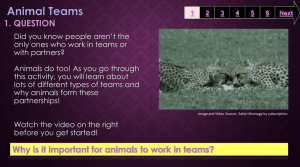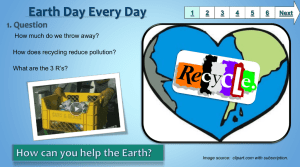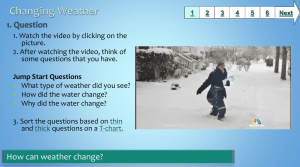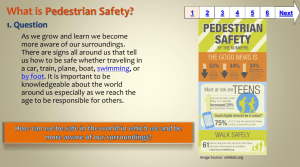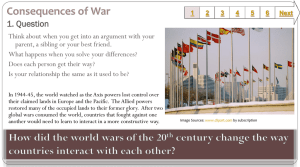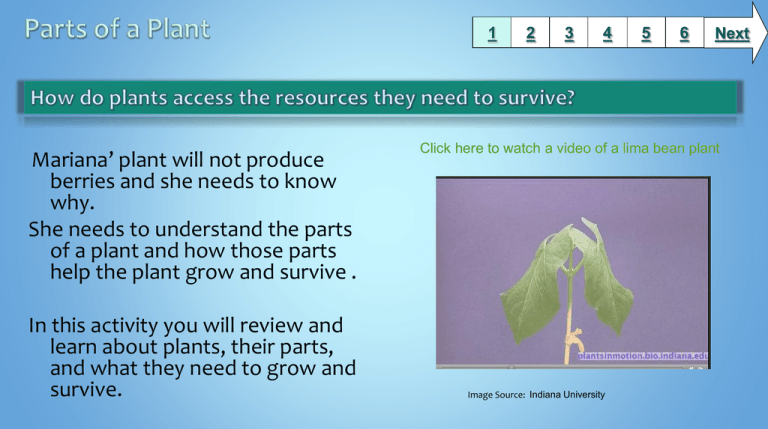
1
Mariana’ plant will not produce
berries and she needs to know
why.
She needs to understand the parts
of a plant and how those parts
help the plant grow and survive .
In this activity you will review and
learn about plants, their parts,
and what they need to grow and
survive.
2
3
4
5
6
Next
Click here to watch a video of a lima bean plant
Image Source: Indiana University
1
2
3
4
Click on the resources below to find information
on parts of a plant and how they help the plant
grow and survive:
Brainpop Jr
Plants
Word Wall
VIDEO
Parts of a Plant
Using Light
Leaves
Video Source: Discovery Education
Roots
5
6
Next
1
2
3
4
5
6
As you use the resources on
Slide 2, complete this table to
organize your information.
When you have viewed all of the
resources on Slide 2, you can take
the Brain Pop quiz to see how
much you have learned!
Hard Quiz
Easy Quiz
Image Source: Brainpop Jr.
Next
1
2
3
4
Use Pixie or Wixie to draw a
diagram of a plant.
Label the parts and write a
sentence that tells what each
part does to help the plant
grow and survive.
This checklist will be used to
assess your diagram.
Image Source: Licensed by Microsoft Office
5
6
Next
1
Find out more about plants from
the following resources
2
3
4
5
Plants, Climate and the
Environment!
Hydroponic Plants -can plants
grow without soil?
Plants for Kids –fun facts, videos
and experiments!
Wild by Nature: Killers in the Bog!
Video Source: Discovery Education by license
6
Next
1
Grade 2 Science
BCPS Curriculum / Maryland State Curriculum/ Next Generation Science Standards
2-LS2-1. Plan and conduct an investigation to determine if plants need sunlight and water to grow.
2-LS2-2. Develop a simple model that mimics the function of an animal in dispersing seeds or pollinating
plants.*
2-LS4-1. Make observations of plants and animals to compare the diversity of life in different habitats.
Common Core State Standards
Reading: 1. Read closely to determine what the text says explicitly and to make logical inferences from it;
cite specific textual evidence when writing or speaking to support conclusions drawn from the text.
Writing: 7. Conduct short as well as more sustained research projects based on focused questions,
demonstrating understanding of the subject under investigation.
Standards for the 21st Century Learner
1.1.6 Read, view, and listen for information presented in any format (e.g. textual, visual, media, digital) in
order to make inferences and gather meaning.
2.1.3 Use strategies to draw conclusions from information and apply knowledge to curricular areas, realworld situations, and further investigations.
ISTE NETS - National Educational Technology Standards for Students
3. Research and Information Fluency: Students apply digital tools to gather, evaluate, and use information.
b. Locate, organize, analyze, evaluate, synthesize, and ethically use information from a variety of
sources and media.
4. Critical Thinking, Problem Solving, and Decision Making: Students use critical thinking skills to plan and
conduct research, manage projects, solve problems, and make informed decisions using appropriate
digital tools and resources. c. Collect and analyze data to identify solutions and/or make informed
decisions.
2
3
4
5
6
Time Frame: 1-2 days
Differentiation strategies for this lesson:
Direct students to use learning tools included in our BCPSlicensed databases, such as: audio read-aloud, labeled reading
levels/Lexiles, and embedded dictionaries.
Offer choices of resources based on reading ability
Offer choices of final product using technology or traditional
Jigsaw activities
Learning Styles addressed in this lesson:
Visual, Auditory, Kinesthetic, Field Independent
Notes to the teacher:
Collaborate with your school library media specialist to
implement this lesson.
Students may need to enable cookies to view Brainpop
Last updated: July 2014
Created by Linda Brown, Library Media Specialist
BCPS Slam Dunk Research Model, Copyright 2013, Baltimore County Public Schools, MD, all rights reserved. The models may be used for educational, non-profit school use only.
All other uses, transmissions, and duplications are prohibited unless permission is granted expressly. This lesson is based on Jamie McKenzie’s Slam Dunk Lesson module.

